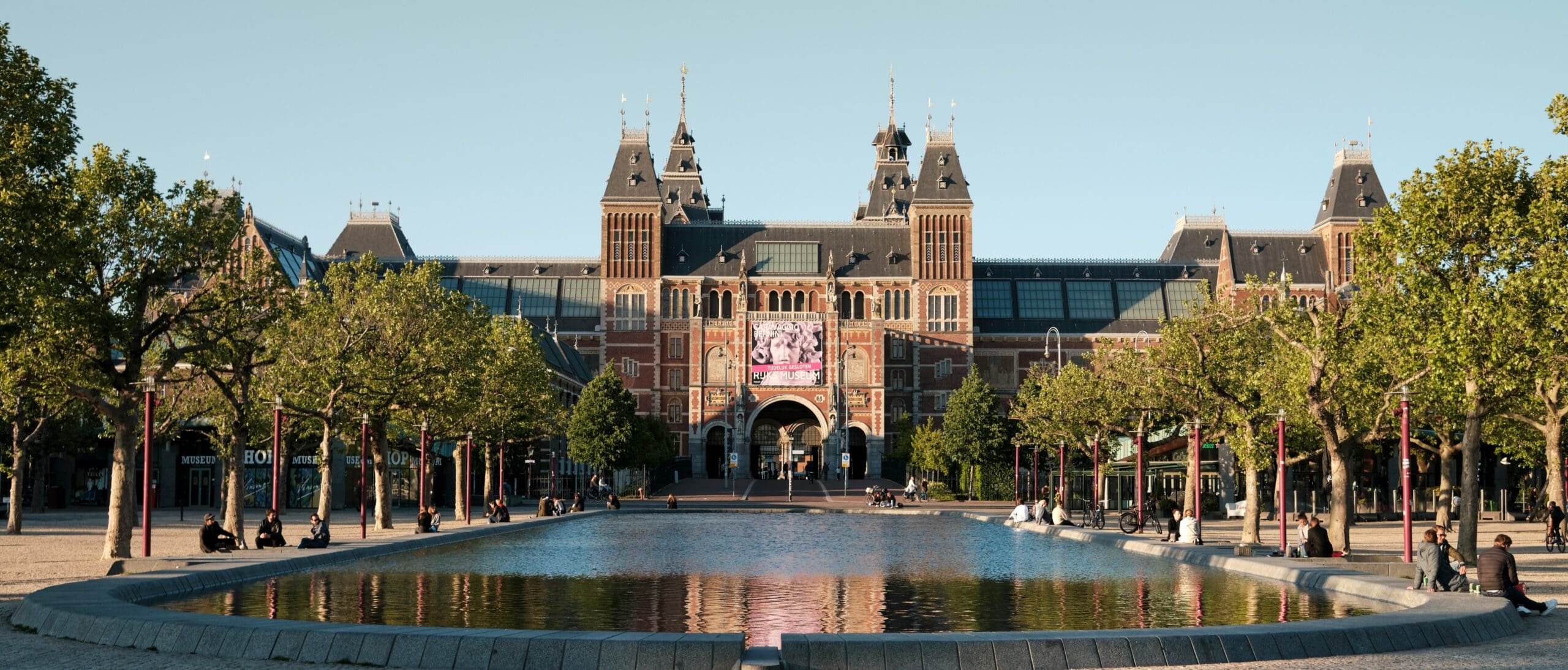The Rijksmuseum Done Right | How to Visit & What Not to Miss
By Haley Drukee
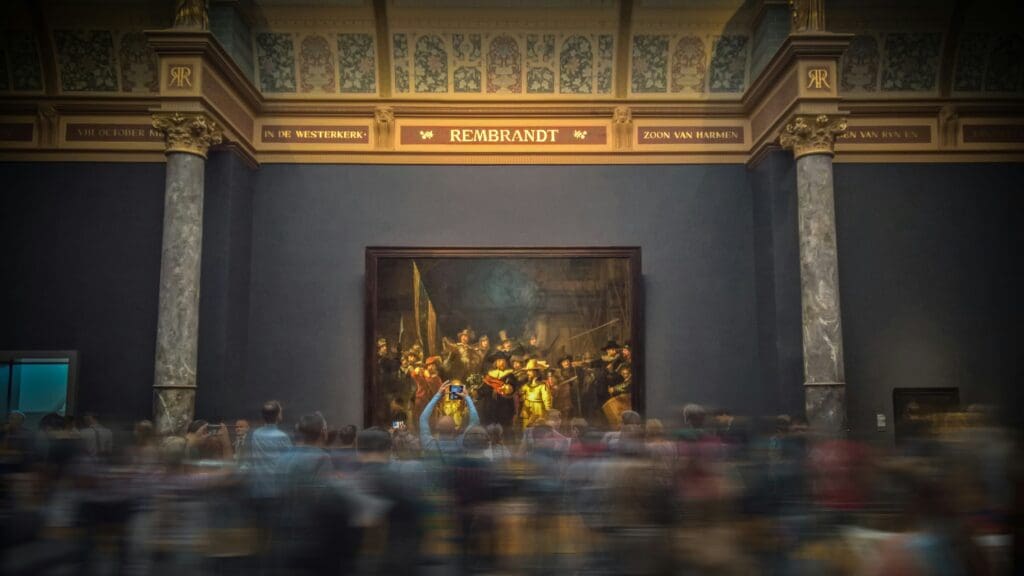
There are few cultural institutions in the world with as storied a past and bright a future as The Rijksmuseum. A true icon of the Netherlands (housing 800 years of Dutch art and history), the building and its contents have steadily evolved since doors opened in 1885. Now, over a decade on from an extensive restoration that brought the site as close as possible to architect Pierre Cuypers’ original vision, the museum is finding new ways to marry its old-world aesthetic with forward-thinking programming. The result? A perfect afternoon indulging in beauty and craftsmanship, marvelling at exploration and advancements, and grappling with the difficult and challenging aspects of a nation’s history.


If it sounds like a lot, that’s because it is — in a good way, but an overwhelming one, too. How do you approach a space of this magnitude to make sure you get the most out of it? To find out, I asked Nick Post, The Rijksmuseum’s sales manager, who also happens to be an expert tour guide. With his unparalleled knowledge of both the museum’s collection and history of the Dutch capital, there is nobody I’d trust more for advice on what to see and do. Step number one, he tells me, is to buy your tickets online because they don’t sell any onsite.
Once tickets are sorted, start at the exterior. The architecture is a narrative all its own, full of details that speak to the inspiration and journey of the building and the nation. Pierre Cuypers was a revered yet controversial figure, and the exterior of the building is where you’ll start to see that unfold. Nick points out the sneaky rendering Cuypers included of himself among others on the facade. Another curious detail: walk through the tunnel that runs down the centre (a deliberate feature meant to join old and new sides of the city) and look up. There’s a large black strip on the ceiling that most wouldn’t notice or care about, but that strip is actually an opening to the get prized piece The Night Watch inside.
And inside is where we’re headed next. The interior architecture has been through several iterations both in style and layout — most related to religious, political or social views of the powers that be and the general public at the time. Renaissance-inspired frescoes gave way to bare white walls until eventually the building was restored to Cuypers’ vision (with a modern refresh). You can even see remnants of the original paint on the walls and what they used for reference during the restoration process. Most important to note here: the museum is now arranged in chronological order, so visitors can explore by periods of history instead of works by type. The easiest way to get a bird’s eye view of it all is by downloading their app (including audio and step-by-step guides).

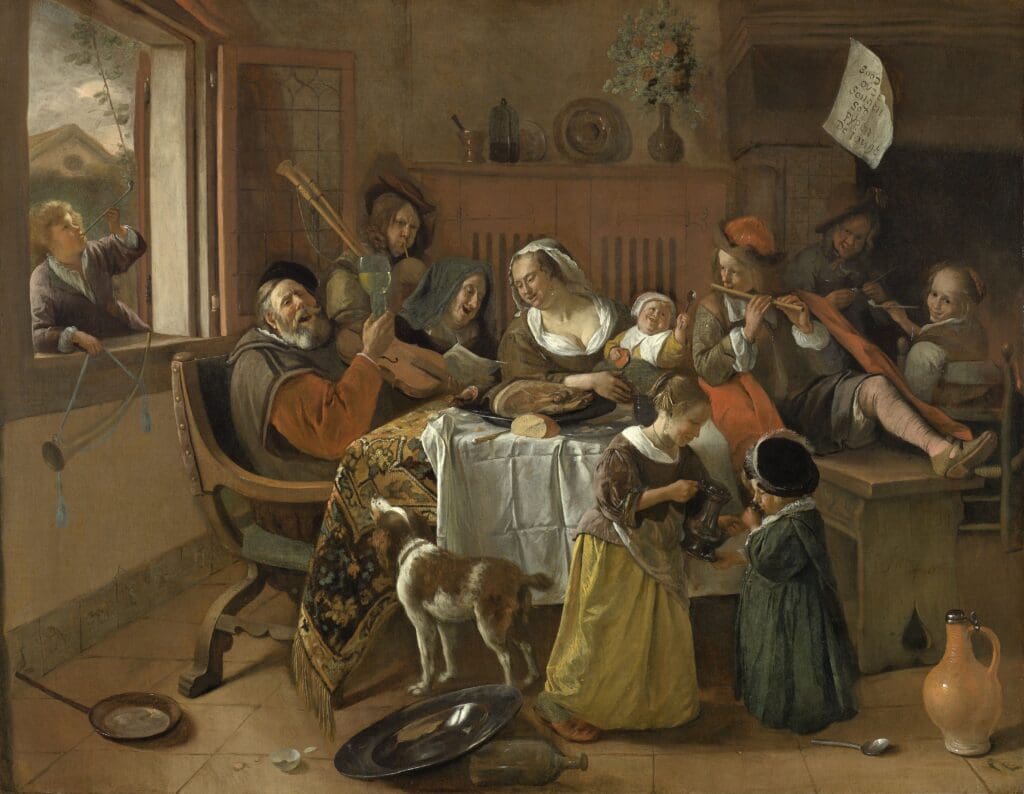
When it’s time to delve into the collection, Nick brings us to the heart of the museum: the Gallery of Honour. This is where the most celebrated paintings from 17th Century Dutch masters, including Johannes Vermeer, Rembrandt van Rijn, and Jan Steen are on display. If you’re short on time for your first visit, this is your must-see destination for breathtaking, stop-you-in-your-tracks art at the apex of beauty and skill.
He suggests the best way to take in each painting is to spend some time looking at it before reading the title and description. Ask yourself: what do I see? Consider the colours, the subject, the framing, the texture, the little details (and with Dutch masters, every detail is significant). We look at Jan Steen’s “The Merry Family” (1668) as an example of how to read visual cues to extract the artist’s intentions. At first glance it’s a jovial family scene, but spend a bit more time with it and (no spoilers) you’ll discover a deeper message about frivolity, class and parenting.
If you're someone who needs a moment of quiet respite from large groups, Nick recommends the Asian pavilion for its exceptional collection and lighter foot traffic.
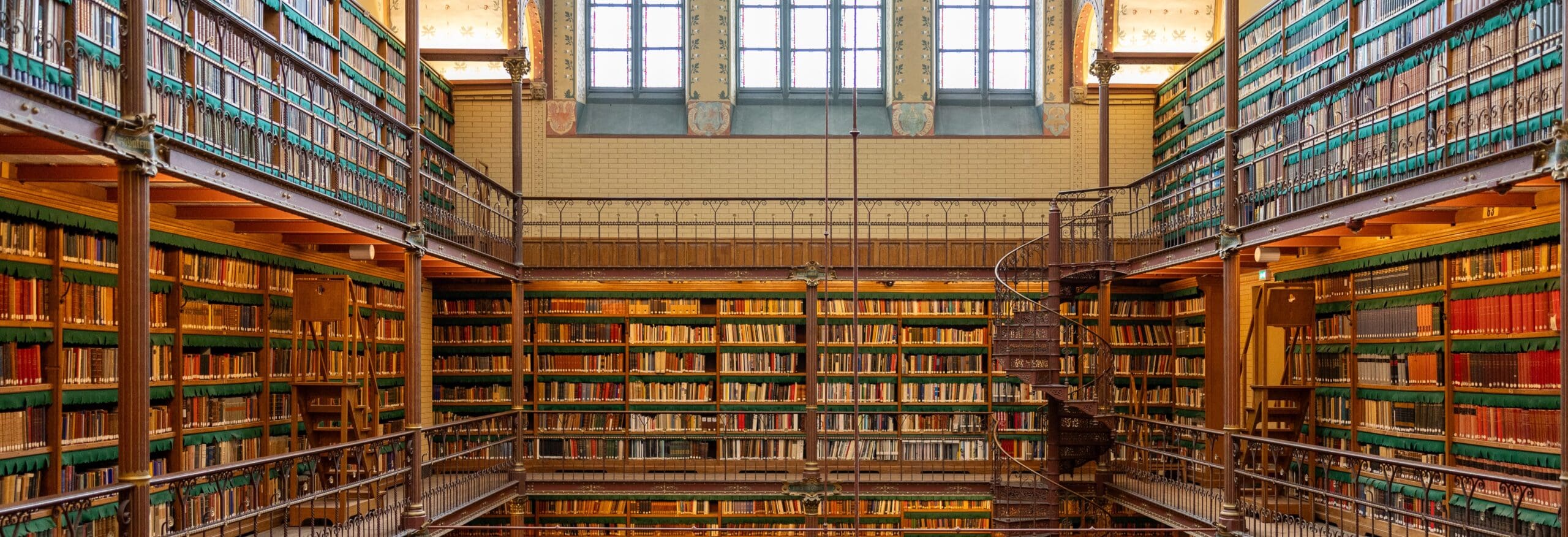

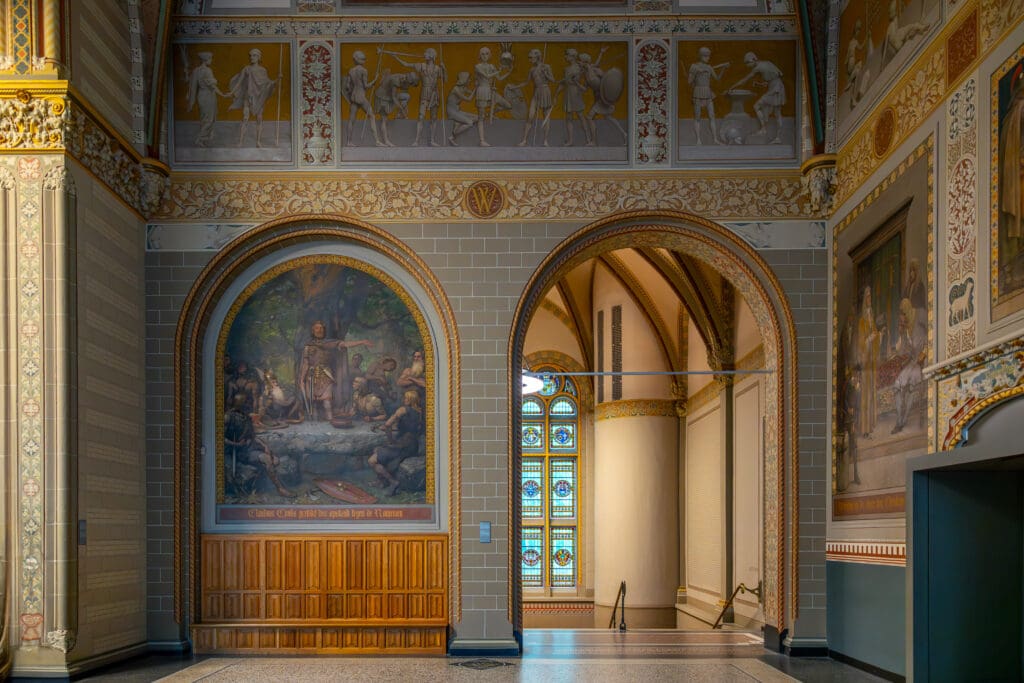
And on the note of families, this is a fantastic place to take yours. The Rijksmuseum has a host of programming available specifically for parents and children of different age groups. Staff go the extra mile to make experiences immersive with costumes, props, characters and games. There’s a lot of dense subject matter on offer, and these specially designed tours and activities make education accessible and appropriate, both through topics and allotted time. Plus, it’s very cute and funny for the adults, too.
Back on our tour, we take in self-portraits of Rembrandt and Van Gogh, The Night Watch (even more gargantuan in person than you might expect) and, to my delight, The Milkmaid by Vermeer. Moving through the rest of the 1600s, Delft Blue is a classic highlight that rightfully garners attention, but don’t sleep on the corner rooms as well. A unique feature of the chronological design of the museum is that, while the centre rooms of each floor focus on what was happening within the Netherlands during that period, the corner rooms provide global context – both the impact of the Netherlands on other countries and vice versa. There are some very important treasures of history in there. These can appear insignificant from an aesthetic perspective (not necessarily decorative items) but on closer look they reveal astonishing significance.

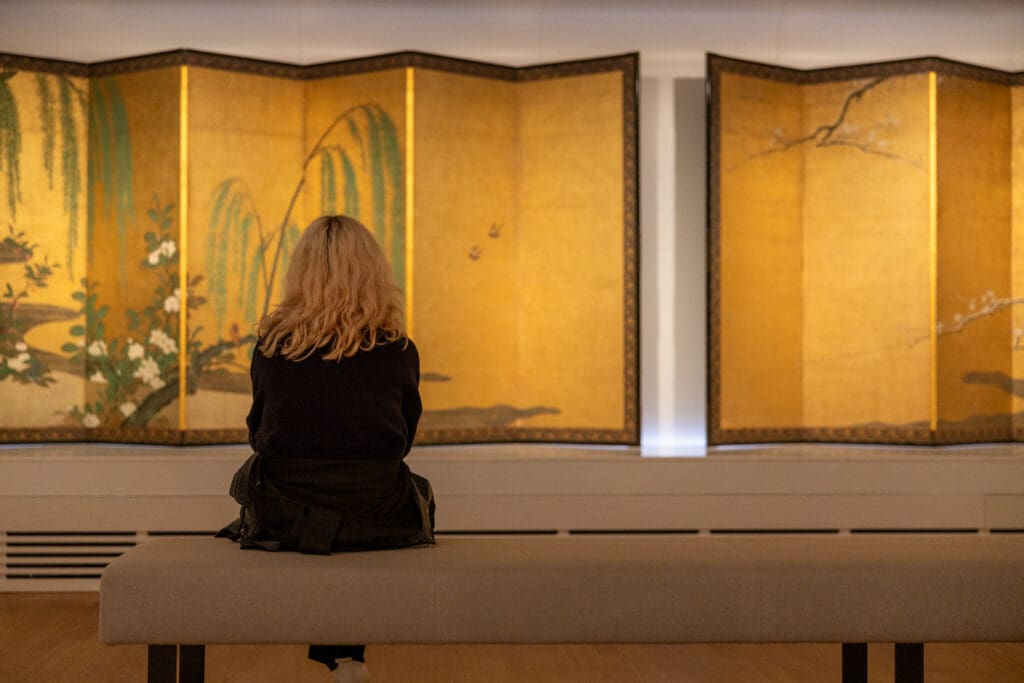
Nick points out a clock that doesn’t look particularly special (maybe even junk-ish) but read the description and you’ll learn it’s the clock from Barentsz and Van Heemskerck’s 1500s trek through the Arctic — the icon attributed to the crew’s survival as their only link to time, the outside world, and sanity. There is also what looks like a large, chipped plate that could easily be skipped at first glance. But the dish, inscribed 1616 and discovered 80 years later, relates to Dirck Hartogh, the first European to set foot on land in Australia and who left this tin plate on the shore to mark the occasion. One more for good measure: the collection includes the first standard metre, kilogram and volume measures (the French invented the metric system, the Netherlands were the first country to successfully introduce standardised measurements).
Perhaps one of the museum’s most admirable and crucial initiatives is increasing the presence and representation in its collection of colonised and marginalised groups that have been historically excluded from these spaces. Nick directs us to a large iron kettle and explains this was used by enslaved individuals to boil sugar cane juice, the first step to producing crystalised sugar. Recognising that the luxury items in the collection like porcelain sugar bowls, enjoyed by the elite, weren’t possible without oppression is a step towards a well-rounded understanding of history that hasn’t always been available. Another standout: “two salt cellars” by Johannes Lutma, with a description focused on the story of these items in the context of Jewish families during the Second World War.

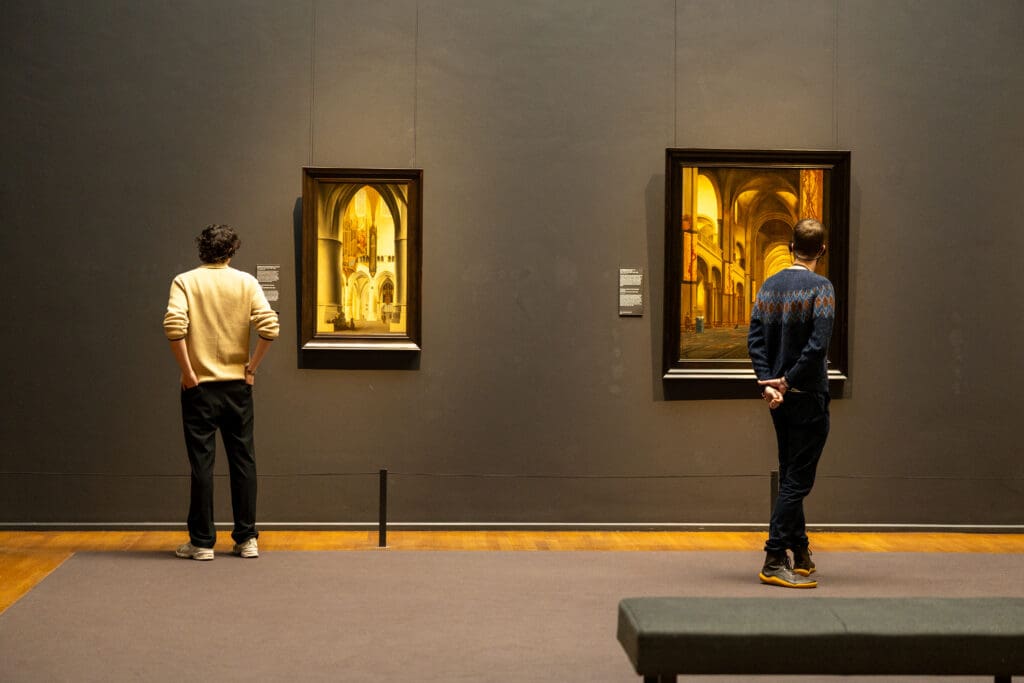
At this point we’ve spent a couple hours looking, listening and learning, and it feels like a good time for a break from the buzzing crowds. If you’re someone who needs a moment of quiet respite from large groups, Nick recommends the Asian pavilion. Not only does this hold an exceptional collection, but its overall design and lighter foot traffic makes it a great spot to slow down, take a seat and chill. Of course, there’s also the restaurant and gift shop for a time out, too (hello, exclusive collectables and all things Miffy). If you’re a fan of a quality souvenir, you’ll be hard-pressed to find better elsewhere in Amsterdam.
The architecture is a narrative all its own, full of details that speak to the inspiration and journey of the building and the nation.
Before we depart, I ask Nick if he can give me a quickfire guide for the Rijksmuseum that would work for most visitors. These are his top suggestions:
- Know before you go! Take a look at the collection online to get an idea of what’s inside and what you might want to see.
- Don’t try and see all of it at once. You’ll get more out of the experience by focusing on a few key pieces and spending time with them versus quickly floating through every room.
- Two hours is a healthy timeframe for your visit, especially if it’s your first.
- Download the app if you want to experience the enrichment of a tour with the ability to move at your own pace.
- Special exhibitions are always rotating and programming changes with the seasons, so take these into consideration when planning your visit (especially for those with kids).
